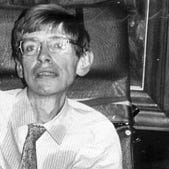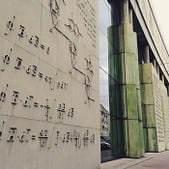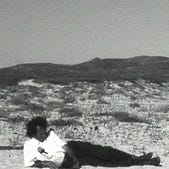A. Einstein & A. Eddington
Arthur Eddington and the first experimental evidence of Einstein’s general relativity
The Preconceived Notion
The force of gravity is considered to be one of the four fundamental forces of nature. It is the force that binds planets, galaxies, and star clusters together. It is the force that dominates the existence of a black hole and makes it one of the most powerful objects in space. Before Einstein, the only consistent explanation of how gravity works were provided by Sir Isaac Newton in his book the Principia published in 1687. Newton explained that gravity is an attractive force responsible for keeping planets in orbit. His views were very widely accepted, and his math worked pretty well. However, Newton couldn’t explain the origin of gravity. He left that idea to the God.
Einsteinian View of Gravity
On 25 November 1915, 36 years old Albert Einstein presented a set of papers to the Prussian Academy. The papers were about his idea of gravitation that contained a set of mathematical equations that gave details about curved space-time. According to Einstein, space and time are not completely different entities but are dimensions of the same continuum of the universe. To put it simply, the Einsteinian view of gravity described gravity not as an attractive force that binds planets and stars together, but as a result of matter interacting with space.
He explained that space is not static. It is bendable, twistable, and, distortable. The force of gravity, according to Einstein, is nothing but an entity created by the interaction of matter with geometrical space. He called it the general theory of relativity. Physicist John Archibald Wheeler did a fine job explaining the general relativity theory in one single line,
Space-time tells matter how to move; matter tells space-time how to curve.
The set of equations that Einstein formulated in his papers predicted some of the most amazing results including the perihelion shift of planet Mercury, the bending of light coming from the stars, and even the formation of black holes and neutron stars. Einstein was quite a well-known figure in the scientific community due to his brilliant findings that came to the light from his 1905 papers on special relativity but he wasn’t widely popular amongst the general masses.
Einstein did a fine job setting up the mathematical foundations of his mind-bending theory of gravity but there were no experimental pieces of evidence to prove his idea to be true. And until and unless a theory cannot be proven experimentally, that cannot be accepted to be true. That’s how the scientific method works.
Arthur Eddington and the 1919 Solar eclipse
Soon after, the papers of Albert Einstein about the theory of gravitation fell into the hands of a British astronomer and physicist Arthur Eddington. Eddington studied Einstein’s papers and instantly predicted that this could be another revolutionary stance in physics after Newton. He translated Einstein’s papers, which were written in German, to English. Eddington focused upon one of the predictions of Einstein’s equations about the bending of starlight. It was always supposed that light always travels in a straight line through space. But Einstein’s theory was correct, the light would bend due to the bending curvature of space-time.
Eddington and his team including Frank Dyson thought of experimenting with these predictions of Einstein and in May 1919 he set up two expeditions to photograph the solar eclipse. The idea was to capture the fully covered sun and see if the apparent positions of the surrounding stars change. The experiment required heavy sophisticated telescopes and photographic cameras.

After several failed attempts, Eddington got a good charm for a moment after a dark and cloudy sky during the eclipse on 29 May and observed a clear sky with evaporating clouds making the stars appear more clear and distinct through the telescope. He took several pictures on the photographic plates and found a displacement of 1.61 + or — 0.3 seconds of arc. The results of the experiment weren’t exactly what Einstein had predicted in his papers but was close enough to validate his theory over Newton’s. Eddington referred to that moment as
“the greatest moment of his life.”
Einstein’s coverage in international media
In September of the same year, Einstein received a letter from his friend Hendrik Lorentz, that the British expedition team and Eddington had found the deflection in the starlight and the change in positions of the stars hence proving his theory of general relativity.
In November 1919, a meeting was held between the Royal Society and Royal Astronomical Society where the results of the expedition were announced. Joseph John Thomson, theoretical physicist, and Nobel Laureate, who was the president of the Royal Society at the time said,
“This [Einstein’s work] is the greatest achievement in the history of human thought.”
Soon enough, the news was spread all over the world. London Times was the first to cover the story with the title ‘The Fabric of the Universe’, the International New York Times covered the same story with a three-column article titled ‘Eclipse showed gravity variation: Hailed as Epoch Making”. Many other national and international media companies shared Einstein’s works and the experimental results making the physicist an overnight celebrity.
After the official announcements of the results, Einstein’s house was crowded with media personalities from all over the world who wanted to interview him and capture his photos.

Thank you so much for reading. If you like my work and want to support me then you can become a medium member by using this link or buy me a coffee ☕️. Keep following for more such stories.
Science writer and communicator majoring in Quantum Mechanics. Founder of @PhysInHistory and Curator for @ProfFeynman on twitter. Email: thepiggsboson@gmail.com
Share your ideas with millions of readers.





0 Comments:
Post a Comment
<< Home